Fitness
Overview
Resources
Overview
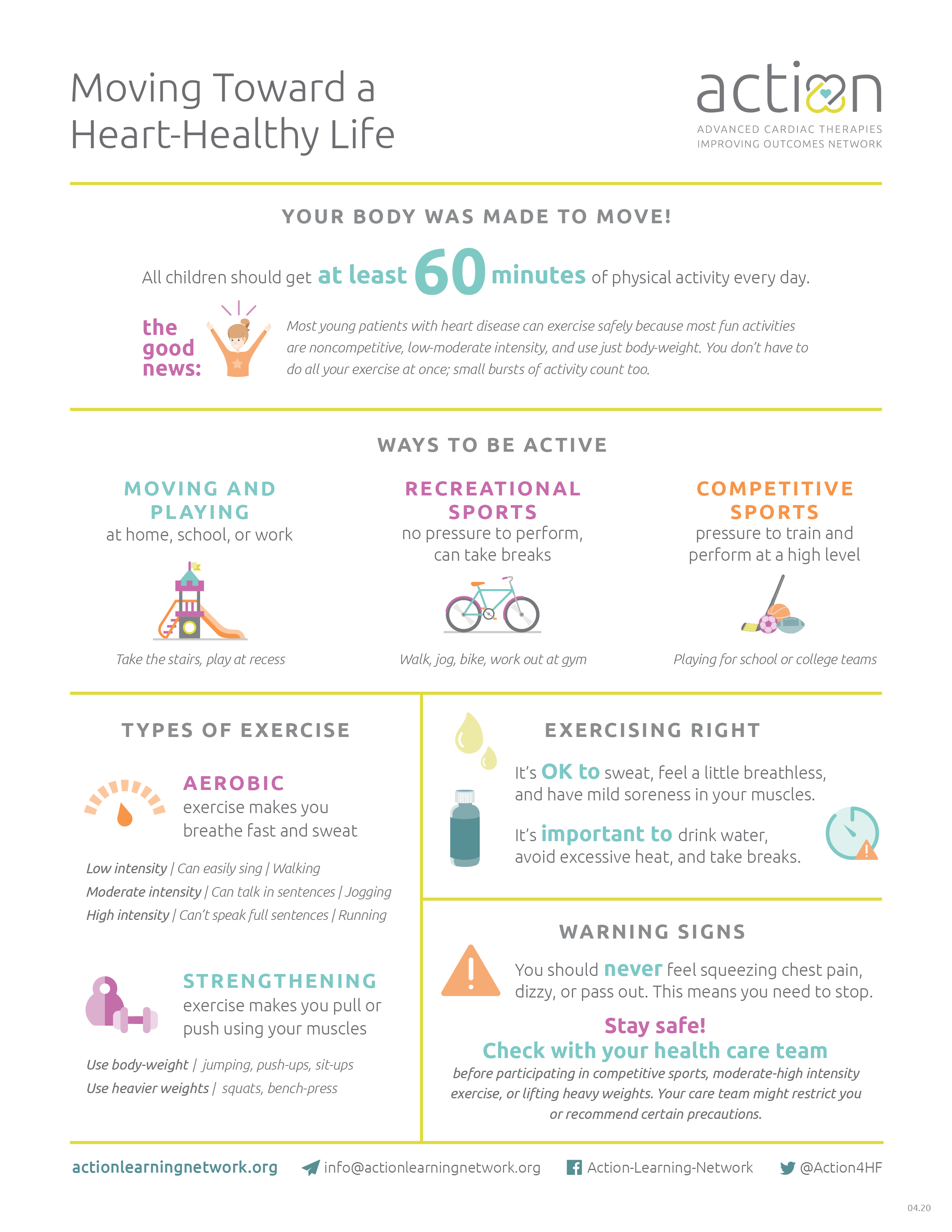
Moving Toward a Heart-Healthy Life
See Activity and Exercise tabs below and downloadthe ‘Moving Toward a Heart Healthy Life’
handout for more information.
Resources
Moving Toward a Heart-Healthy Life
Learn how to be active, get moving, and exercise safely.
Brought to you by the ACTION team, starring Justine Shertzer, a pediatric exercise physiologist and a member of ACTION, and Julian Lerner, an actor, singer, musician, and ACTION Ambassador, these videos are intended to be used by both healthy kids and heart patients, under the advisement of their care team. Exercise is vital to heart health, and these arm, leg and cardio exercises can be performed anytime, anywhere, with or without equipment. Follow along with these exercises and do them in sets for extra heart health benefits!
Stay safe! Ask your care team if these exercises are right for you.
WARM UP
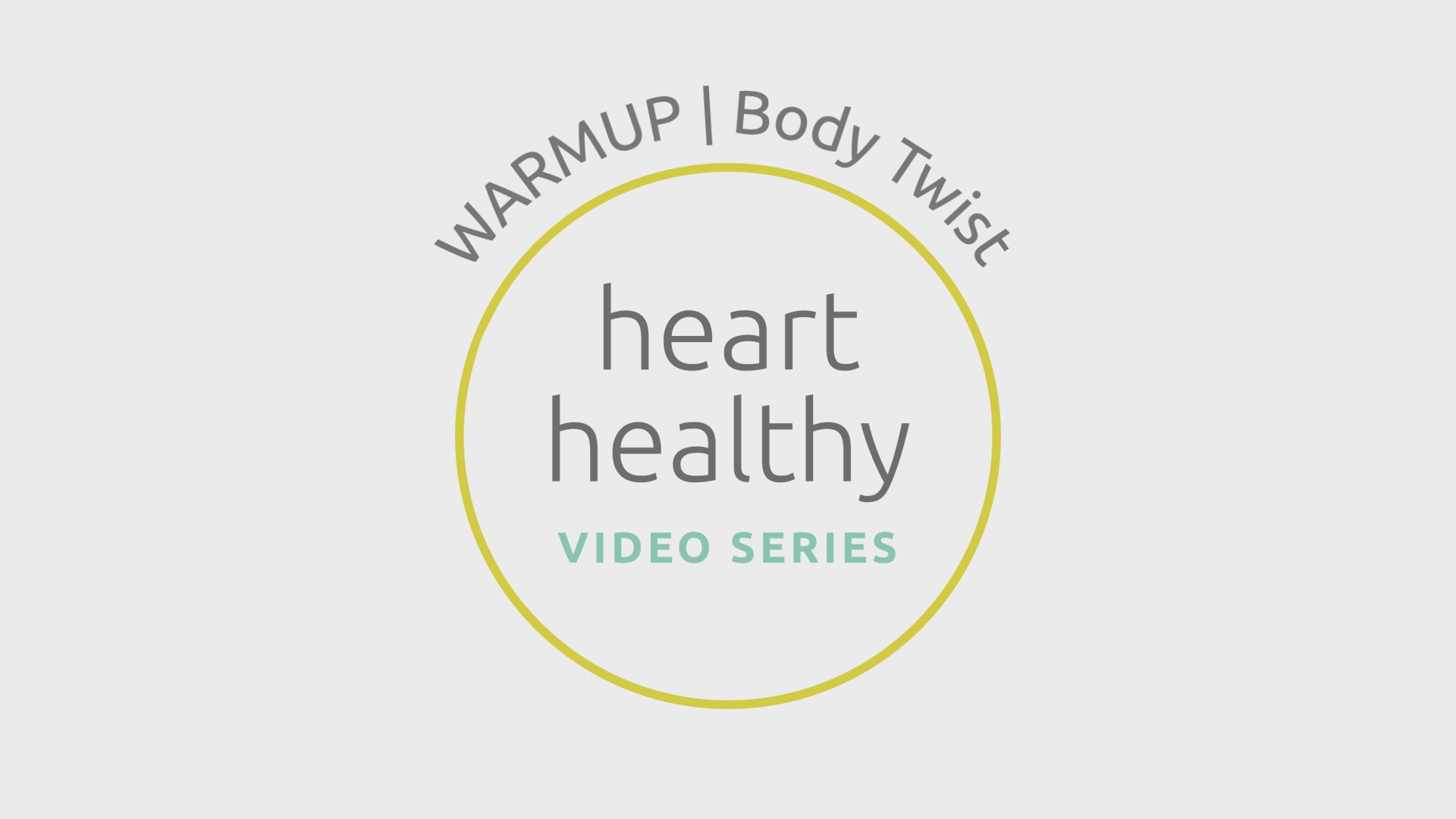
Body Twist
Wave

High Knees
ARMS

YTW
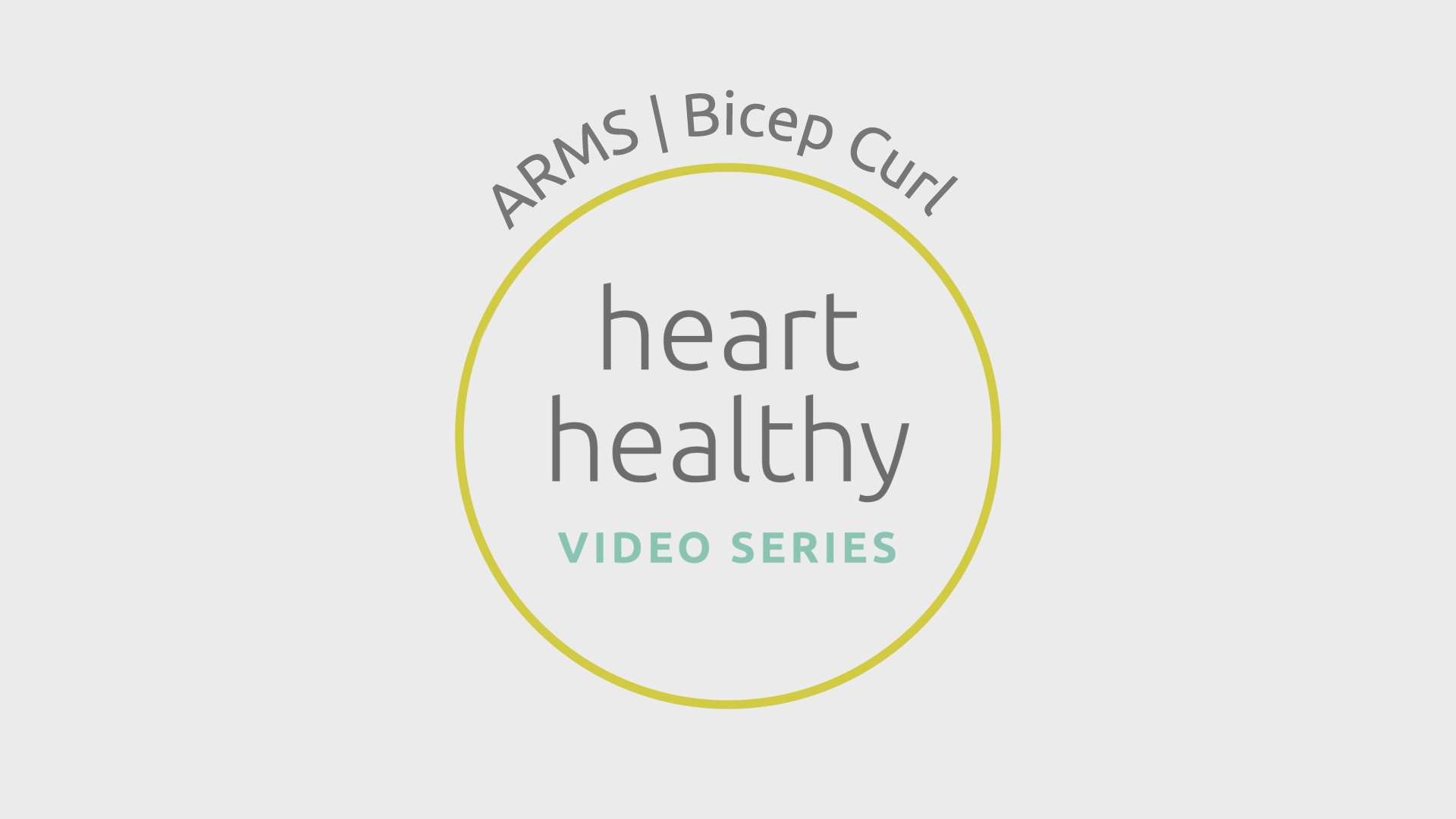
Bicep Curl
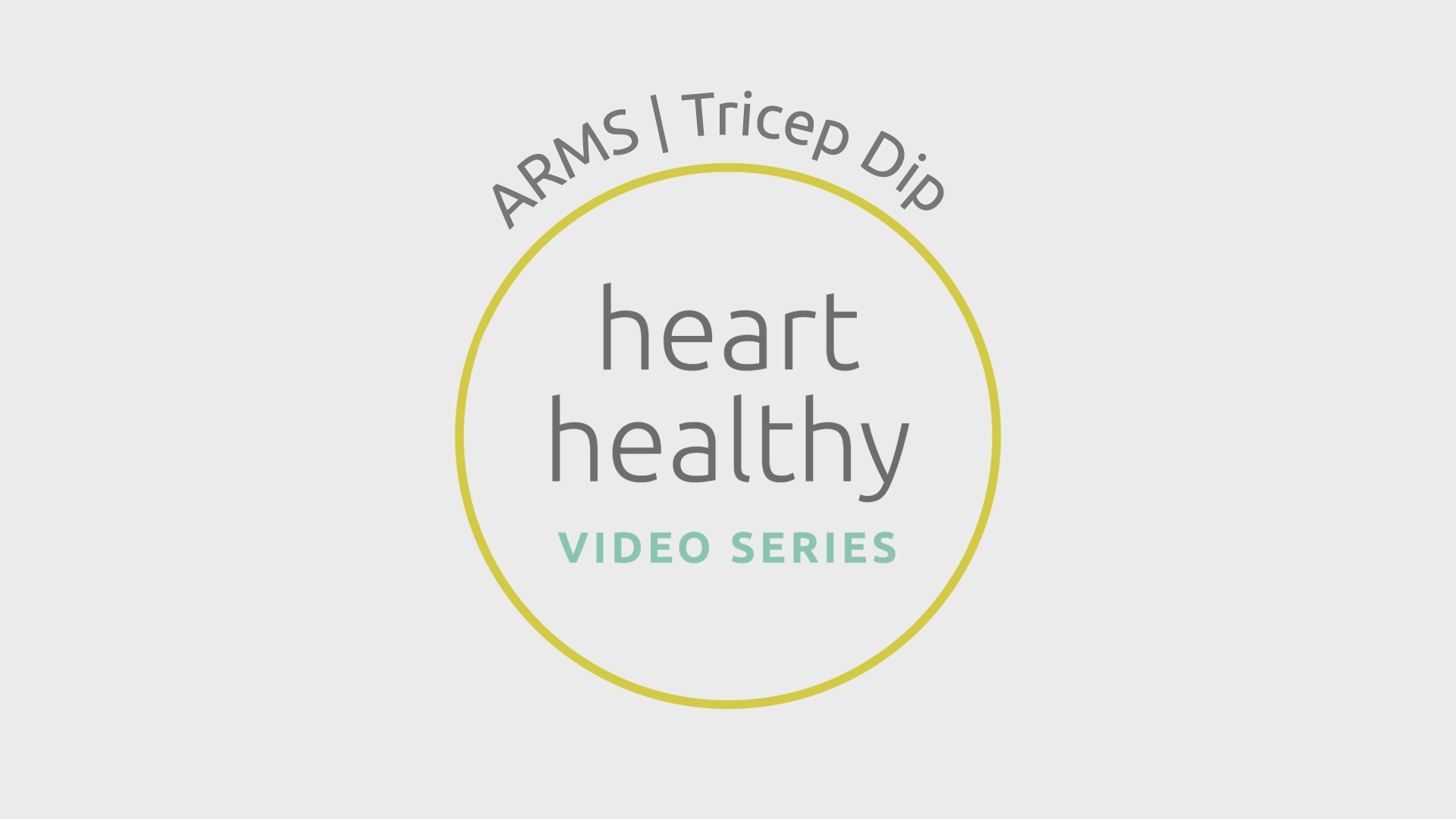
Tricep Dip
LEGS

Calf Raises

Curtsy Squats
CARDIO
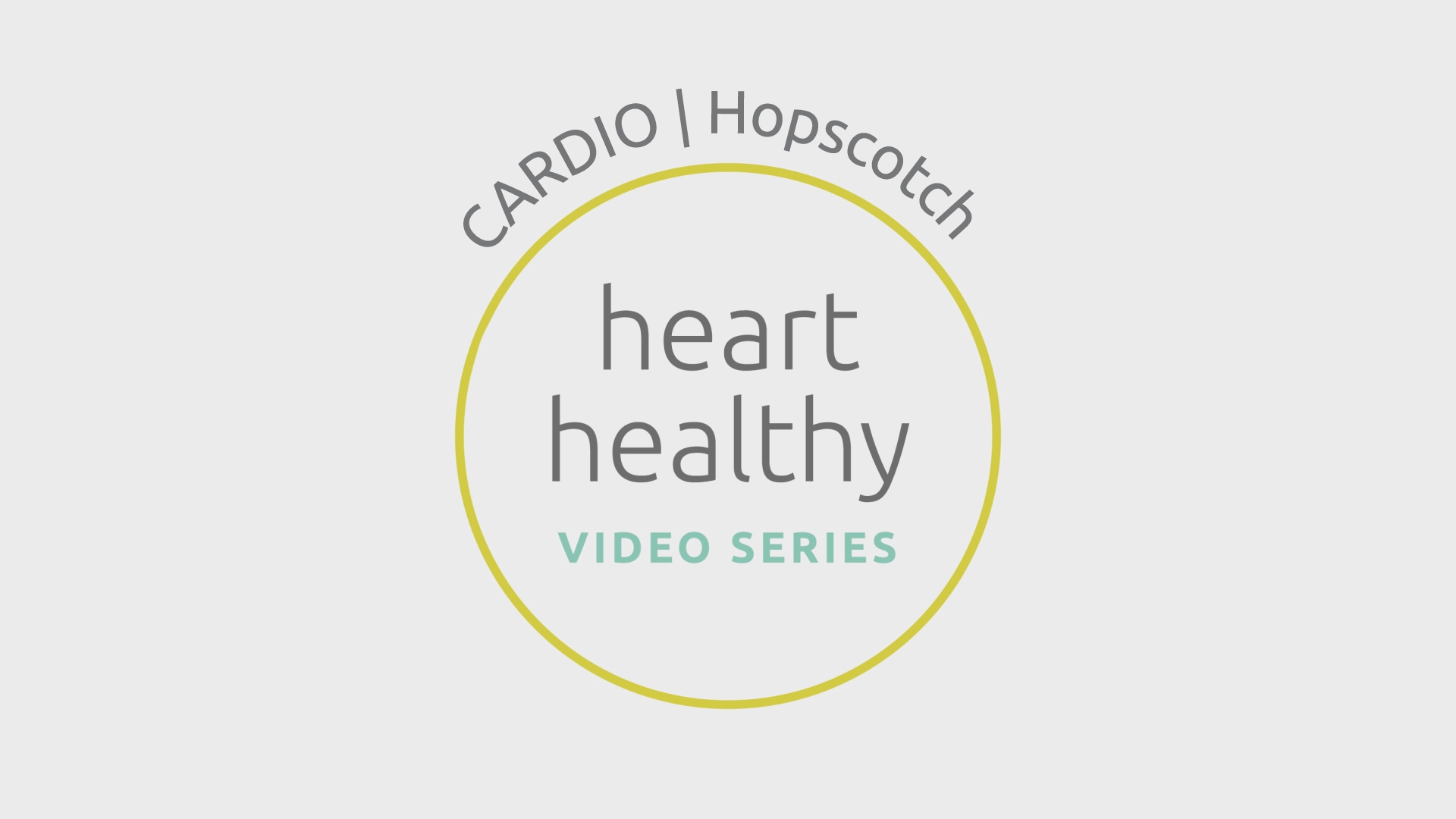
Hopscotch
Leap Frog
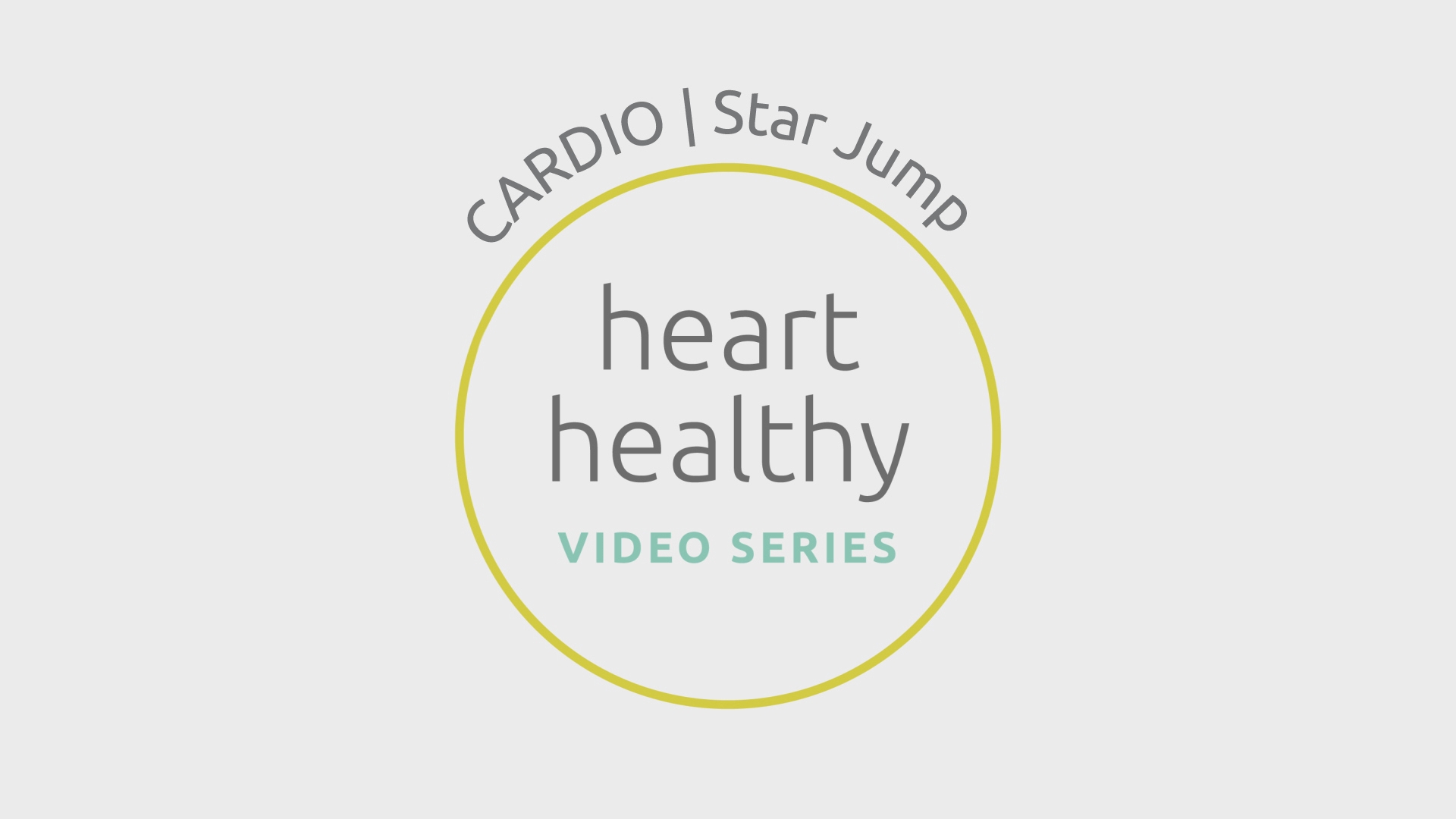
Star Jump
FULL BODY
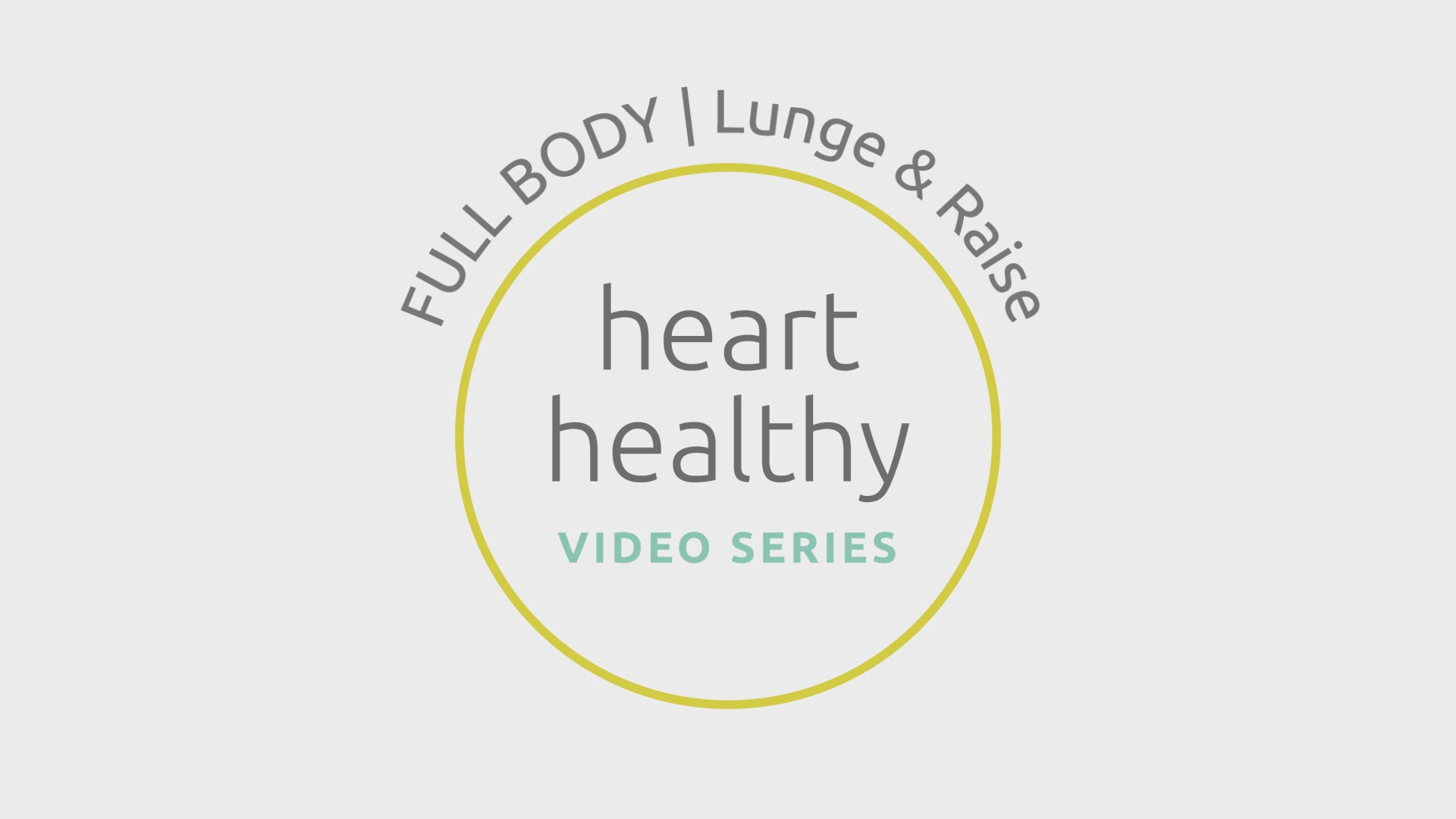
Lunge & Raise
Step Up & Row

Squat
STRETCHING

Whole Body
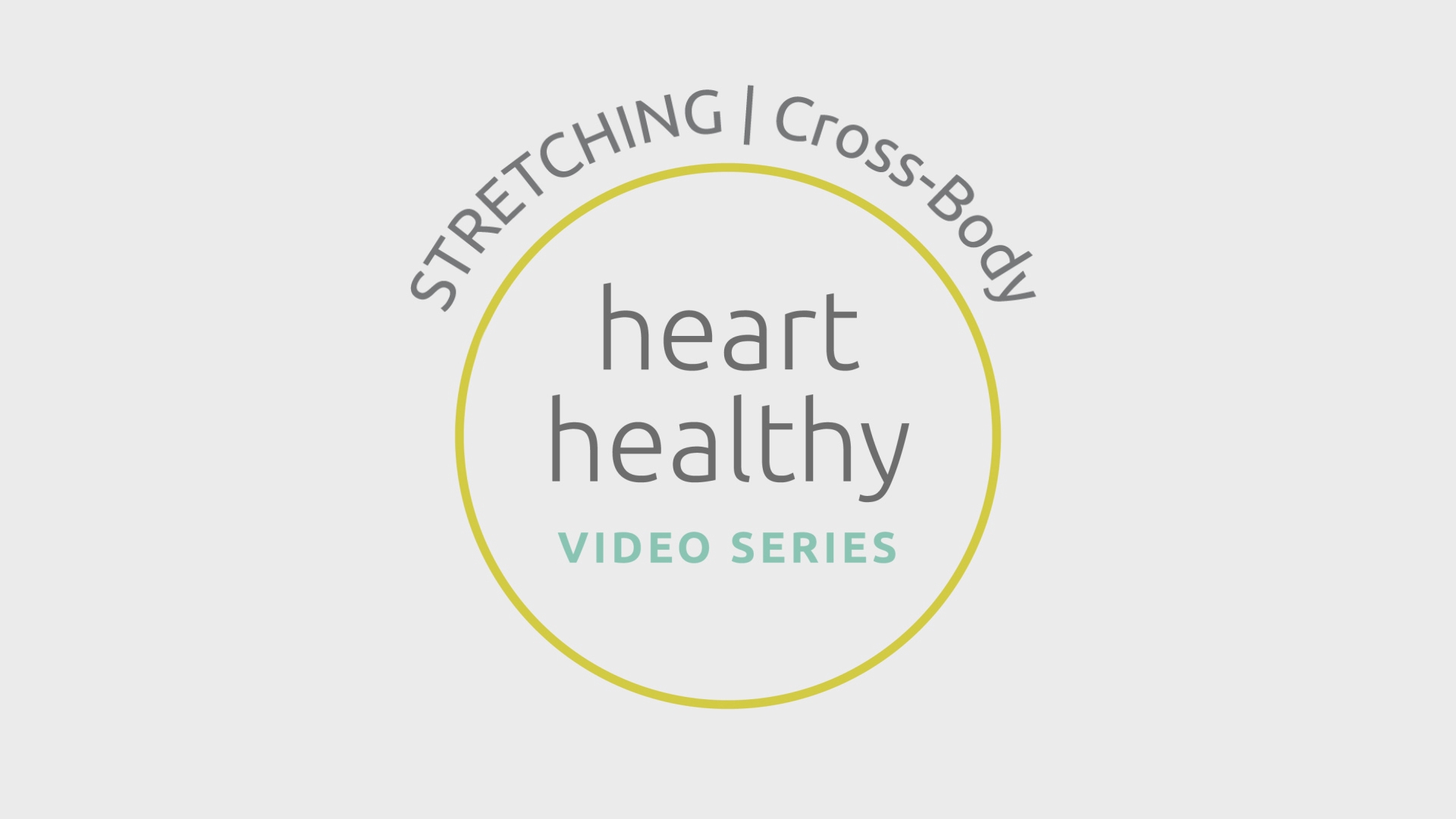
Cross Body
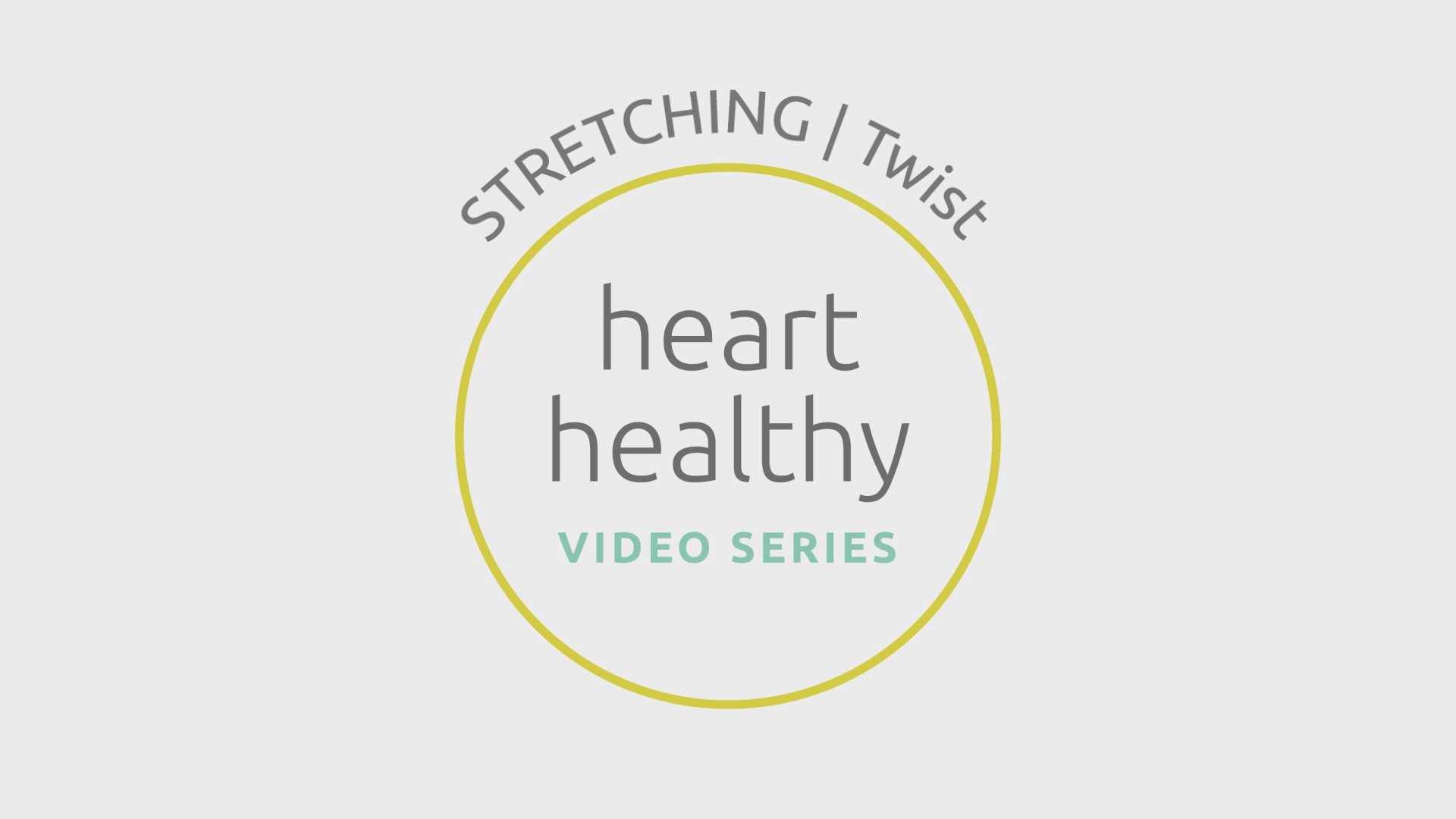
Twist
Toe Touch
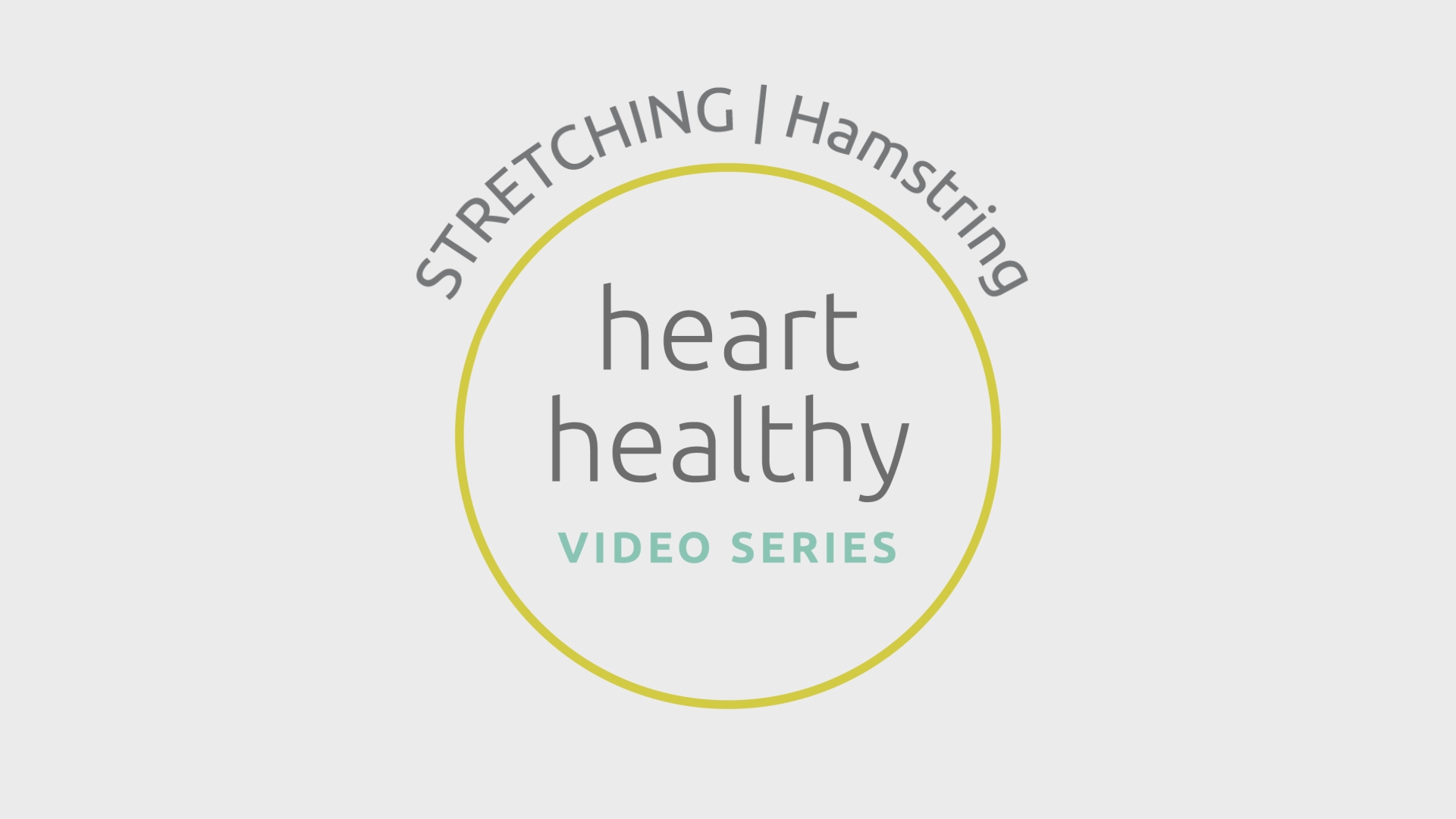
Hamstring
Scroll down to explore ways to be active.
-
Activity
-
Exercises
Activity
 If approved by your care team, it’s important to get at least 60 minutes of physical activity every day. But it doesn’t have to be all at once. Short bursts of exercise are great, too!
If approved by your care team, it’s important to get at least 60 minutes of physical activity every day. But it doesn’t have to be all at once. Short bursts of exercise are great, too!
Even as a patient with heart disease, you can safely exercise in non-competitive, low or moderate intensity activities. Ask your doctor for exercises that are safe for you.
Here are some ways to be active:
- Moving and Playing at Home: Taking the stairs, playing outside or at recess, and helping with chores are great ways to get small amounts of activity throughout the day.
- Steps and Walking: Counting your steps with a wearable monitor (like an Apple watch or FitBit) is a great way to check your progress. Children should aim for 12,000 steps per day.
- Recreational Sports: Participating in low-pressure sports where you can easily take breaks if needed is another great way to stay active. Walking, jogging, and biking are all safe too.
- Competitive Sports: In some cases, playing and training with a competitive team and performing at a high level may also be possible if your doctor clears you.

Exercises
There are two different forms of exercise to include in your daily routines: aerobic and strengthening. Ask your care team which type of exercise is right for you.
 Aerobic Exercises
Aerobic Exercises
Aerobic exercise makes you breathe fast and sweat. Because your heart is a muscle, it’s important that your heart gets a workout. Aerobic exercises are a great way to do that. There are three main levels of aerobic exercises:
- Low intensity: You can still sing while you exercise. Walking is a great low intensity exercise.
- Moderate intensity: You can talk in sentences without feeling too out of breath. Jogging is a typical moderate intensity exercise.
- High intensity: If you’re exercising at a high intensity level, you have trouble talking in full sentences. Running often puts you at the high intensity level of exercise.
 Strengthening Exercise
Strengthening Exercise
Strengthening exercises make you pull or push using your muscles. Keeping a strong, healthy body is important during your journey. Strengthening exercises can help you do that!
There are two ways you can perform strengthening exercises: with just your body weight or with heavier weights. Your care team may guide you toward strength exercises that are right for you.
- Body weight: Exercises that use your body weight include jumping, pushups, and sit-ups.
- Heavier weight: Exercises that would require you to use heavier weights, like handheld weights, might include squats and bench presses.
Do’s and Don’ts
It’s important that no matter what exercises you do, you do them safely.
Here are a few things to keep in mind while you exercise:
- It’s okay to: sweat, feel a little breathless, and have mild soreness.
- It’s important to: drink water, avoid excessive heat, and take breaks as needed.
- You should NEVER: feel squeezing chest pain or dizziness. Be sure to talk with your care team about the right types and amounts of exercise for you.
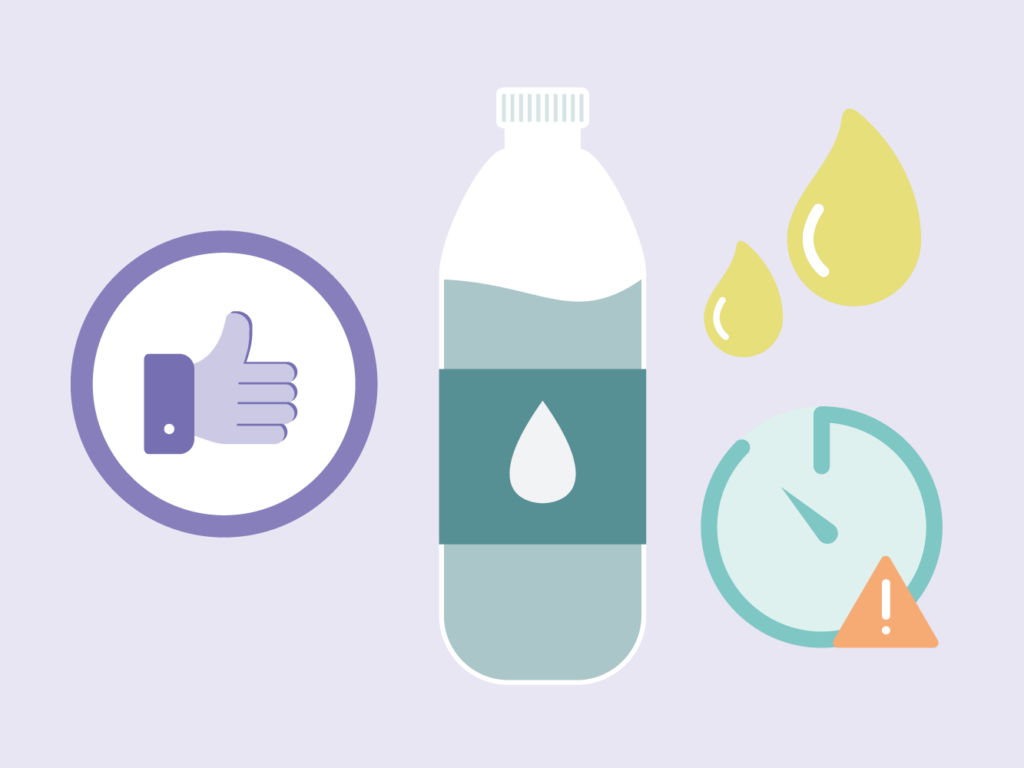

Activity
 If approved by your care team, it’s important to get at least 60 minutes of physical activity every day. But it doesn’t have to be all at once. Short bursts of exercise are great, too!
If approved by your care team, it’s important to get at least 60 minutes of physical activity every day. But it doesn’t have to be all at once. Short bursts of exercise are great, too!
Even as a patient with heart disease, you can safely exercise in non-competitive, low or moderate intensity activities. Ask your doctor for exercises that are safe for you.
Here are some ways to be active:
- Moving and Playing at Home: Taking the stairs, playing outside or at recess, and helping with chores are great ways to get small amounts of activity throughout the day.
- Steps and Walking: Counting your steps with a wearable monitor (like an Apple watch or FitBit) is a great way to check your progress. Children should aim for 12,000 steps per day.
- Recreational Sports: Participating in low-pressure sports where you can easily take breaks if needed is another great way to stay active. Walking, jogging, and biking are all safe too.
- Competitive Sports: In some cases, playing and training with a competitive team and performing at a high level may also be possible if your doctor clears you.

Exercises
There are two different forms of exercise to include in your daily routines: aerobic and strengthening. Ask your care team which type of exercise is right for you.
 Aerobic Exercises
Aerobic Exercises
Aerobic exercise makes you breathe fast and sweat. Because your heart is a muscle, it’s important that your heart gets a workout. Aerobic exercises are a great way to do that. There are three main levels of aerobic exercises:
- Low intensity: You can still sing while you exercise. Walking is a great low intensity exercise.
- Moderate intensity: You can talk in sentences without feeling too out of breath. Jogging is a typical moderate intensity exercise.
- High intensity: If you’re exercising at a high intensity level, you have trouble talking in full sentences. Running often puts you at the high intensity level of exercise.
 Strengthening Exercise
Strengthening Exercise
Strengthening exercises make you pull or push using your muscles. Keeping a strong, healthy body is important during your journey. Strengthening exercises can help you do that!
There are two ways you can perform strengthening exercises: with just your body weight or with heavier weights. Your care team may guide you toward strength exercises that are right for you.
- Body weight: Exercises that use your body weight include jumping, pushups, and sit-ups.
- Heavier weight: Exercises that would require you to use heavier weights, like handheld weights, might include squats and bench presses.
Do’s and Don’ts
It’s important that no matter what exercises you do, you do them safely.
Here are a few things to keep in mind while you exercise:
- It’s okay to: sweat, feel a little breathless, and have mild soreness.
- It’s important to: drink water, avoid excessive heat, and take breaks as needed.
- You should NEVER: feel squeezing chest pain or dizziness. Be sure to talk with your care team about the right types and amounts of exercise for you.


